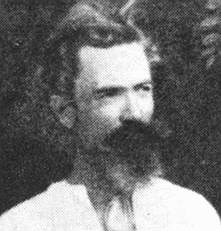KÖRÖSFŐI-KRIESCH, Aladár
(1863, Budapest - 1920, Budapest)


He was one of the founders, and later the leading figure, of the most significant group of Hungarian Art Nouveau, the artists colony at Gödöllő. The colony was founded in 1901, based on the principles of the English Pre-Raphaelite Movement, especially of Ruskin and Morris. Their members were also greatly inspired by Tolstoy's ideas. Their purpose was to create a truly national art founded on Hungarian folklore, as well as to promote the appreciation of crafts and to effect the artistic realization of the principle of "Gesamtkunstwerk".
Körösfői studied a the Munich Academy. During a trip to Roma in 1891 - 1892 he encountered the Nazarene painters; then in Paris. where he spent years studying at the Julian Academy, he absorbed the influence of the Pre-Raphaelites. In 1907 he was awarded a gold medal for his applied art projects and became a professor at the College of Applied Arts in Budapest. His monumental frescos in public buildings occupy a very important place in his oeuvre (Academy of Music in Budapest, 1907; Palace of Culture in Marosvásárhely (today Tiurgu Mures in Romania), 1913; Ceremonial Hall of the Seminary in Temesvár (today Timisoara in Romania), 1915-1917.
